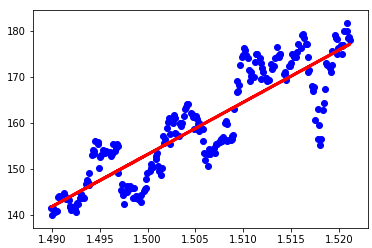The first thing that I did after I bought a laptop with NVIDIA GPU was to install TensorFlow. I skimmed through many blogs and pages on how to install and I found a page by Christian Janze. He did a great job of putting everything together in one place. I'm...
[Read More]
I write about
Installing Docker Compose
Installing Docker Compose.
Wikipedia defines Docker as
[Read More]
Protocol Buffers 101
serialize with efficacy.
Serialization is the process of converting an object into a stream of bytes to store the object or tranfer over a network. Its main purpose is to save the state of an object in order to be able to recreate it when needed. The reverse process is called deserialization. There...
[Read More]
Docker Remote API
Docker from distance.
In the previous post, we saw the basic commands to create a docker image. In this post we will look at docker remote api's.
[Read More]
Building a Docker image
First Docker image.
Wikipedia defines Docker as
[Read More]
Introduction to TensorFlow - Part 1
kick start to TensorFlow.
TensorFlow is a multipurpose Opensource software library for numerical computation using data flow graphs. It is originally developed by Google Brain Team to conduct deep neural networks research. TensorFlow is written in Python, C++ and CUDA. It provides stable Python API,C APIs and without backwards compatability gaurantee C++, Go, Java,...
[Read More]
Self
Finding your true self.
When Python is used in object oriented way we many at times see self used as a first parameter. Programmers coming from different languages may find it odd. In this post we are going to look at self importance in the object oriented world of Python.
[Read More]
Cross Validation
A way to evaluate the model.
When solving a machine learning problem we follow a consistent series of sets. First, partitioning the data set into training and test sets using the train_test_split function. Then fitting the model with the training set. And finally, applying the model on the test set to evaluate the trained model's performance.Let's...
[Read More]
Linear Regression using Scikit-learn
Predicting stock prices.
Scikit-learn (formerly scikits.learn) is a free software machine learning library for the Python programming language. It features various classification, regression and clustering algorithms including support vector machines, random forests, gradient boosting, k-means and DBSCAN, and is designed to interoperate with the Python numerical and scientific libraries NumPy and SciPy. To...
[Read More]
Gradient Descent Algorithm
Reach fast to Nadir.
Gradient descent is an optimization algorithm for finding the minimum of a function. It takes steps proportional to the negative of the gradient to find the local minimum of a function. The following 3D figure shows an example of gradient descent. theta1 and theta0 are the two paramters. Gradient descent...
[Read More]
Multiple Inheritance in C++
Best way to inherit.
Introduction
[Read More]
Dynamic Memory allocation in C and C++
Save your memory.
Dynamic Memory allocation in C First let us look into how the memory is organized. The memory is mainly divided into stack, heap and permanent storage area. The Stack is used to store local variables. Global variables, program instructions and static variables are stored in the permanent storage area. Our...
[Read More]
Round Trip Time in NS2
To and fro journey time.
1. Create two ping agents and attach them to the nodes between which the Round Trip Time is to be calculated.
[Read More]
Introduction to NS2
Simulate a network.
Network Simulator (Version 2), widely known as NS2, is simply an event-driven simulation tool that has proved useful in studying the dynamic nature of communication networks. Simulation of wired as well as wireless network functions and protocols (e.g., routing algorithms, TCP, UDP) can be done using NS2. In general, NS2...
[Read More]
